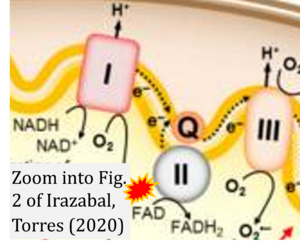Irazabal 2020 Cells
| Irazabal MV, Torres VE (2020) Reactive oxygen species and redox signaling in chronic kidney disease. Cells 9:1342. https://doi.org/10.3390/cells9061342 |
Irazabal MV, Torres VE (2020) Cells
Abstract: Chronic kidney disease (CKD) remains a worldwide public health problem associated with serious complications and increased mortality rates. Accumulating evidence indicates that elevated intracellular levels of reactive oxygen species (ROS) play a major role in the pathogenesis of CKD. Increased intracellular levels of ROS can lead to oxidation of lipids, DNA, and proteins, contributing to cellular damage. On the other hand, ROS are also important secondary messengers in cellular signaling. Consequently, normal kidney cell function relies on the "right" amount of ROS. Mitochondria and NADPH oxidases represent major sources of ROS in the kidney, but renal antioxidant systems, such as superoxide dismutase, catalase, or glutathione peroxidase counterbalance ROS-mediated injury. This review discusses the main sources of ROS and antioxidant systems in the kidney, and redox signaling pathways leading to inflammation and fibrosis, which result in abnormal kidney function and CKD progression. We further discuss the important role of the nuclear factor erythroid 2-related factor 2 (Nrf2) in regulating antioxidant responses, and other mechanisms of redox signaling.
• Bioblast editor: Gnaiger E
Correction: FADH2 and Complex II
- FADH2 is shown as the substrate feeding electrons into Complex II (CII). This is wrong and requires correction - for details see Gnaiger (2024).
- Gnaiger E (2024) Complex II ambiguities ― FADH2 in the electron transfer system. J Biol Chem 300:105470. https://doi.org/10.1016/j.jbc.2023.105470 - »Bioblast link«


